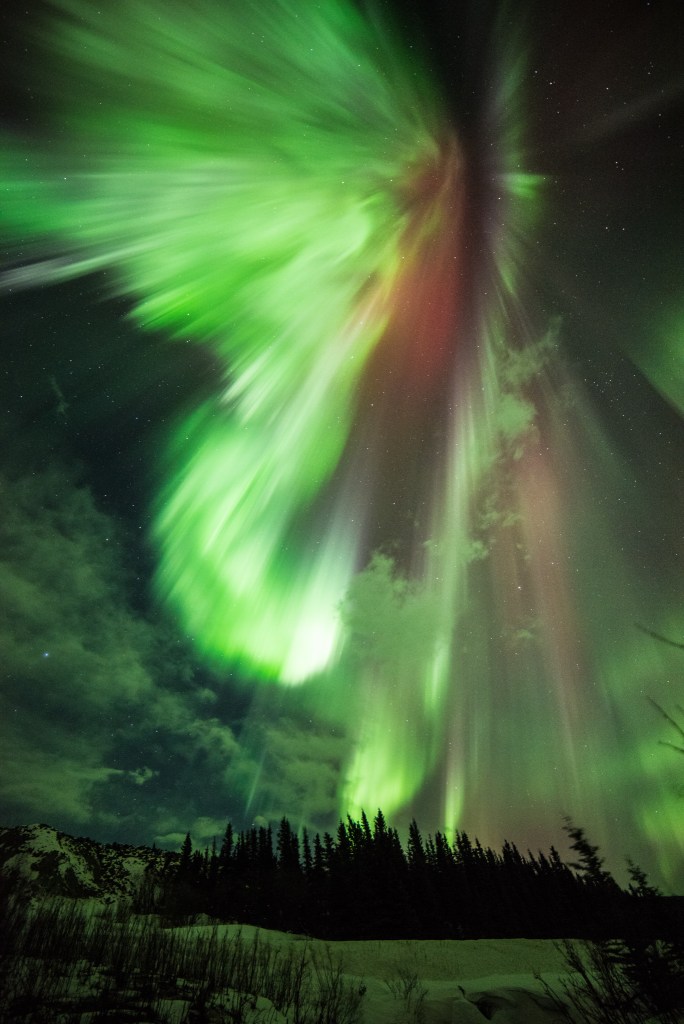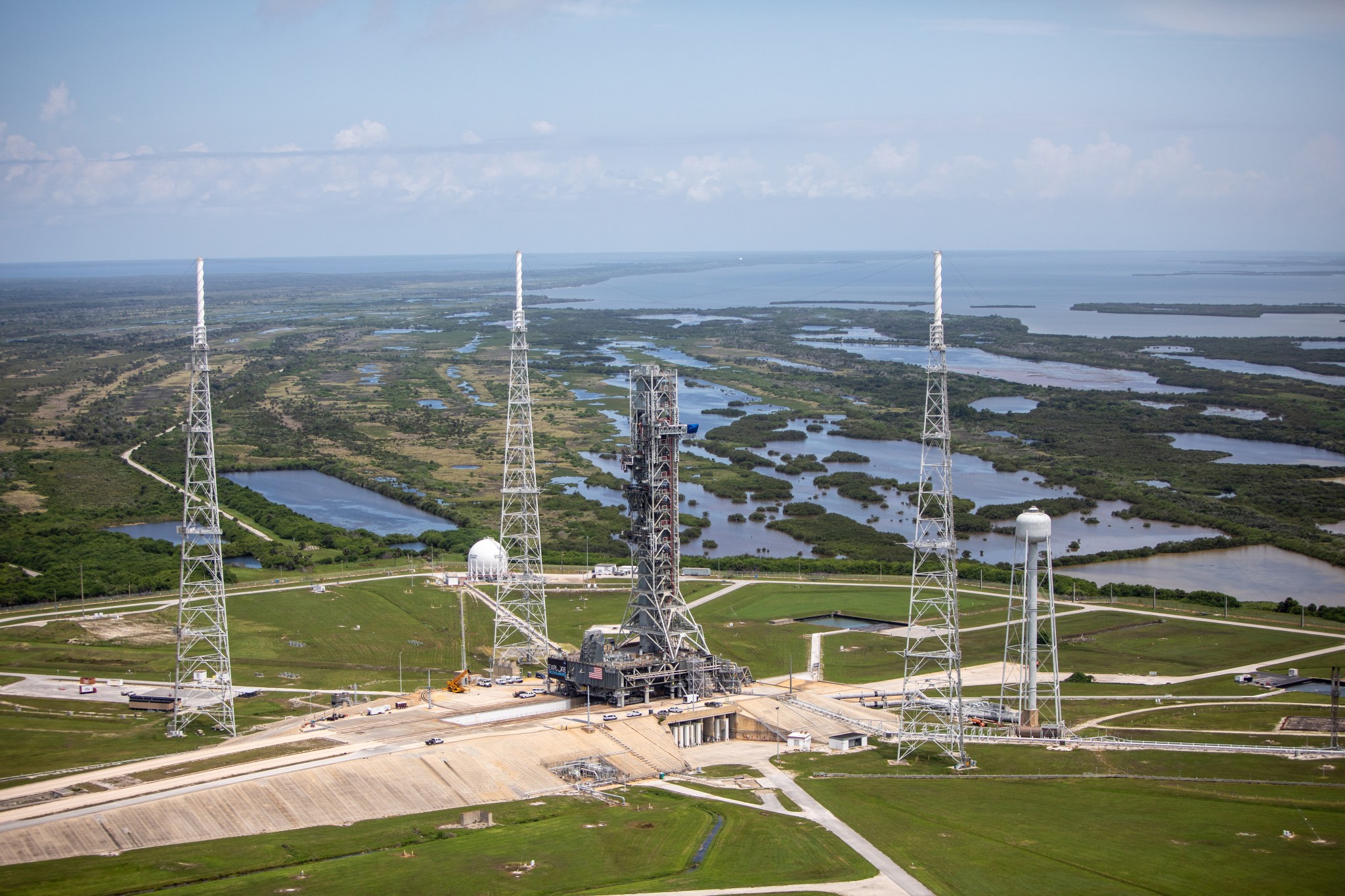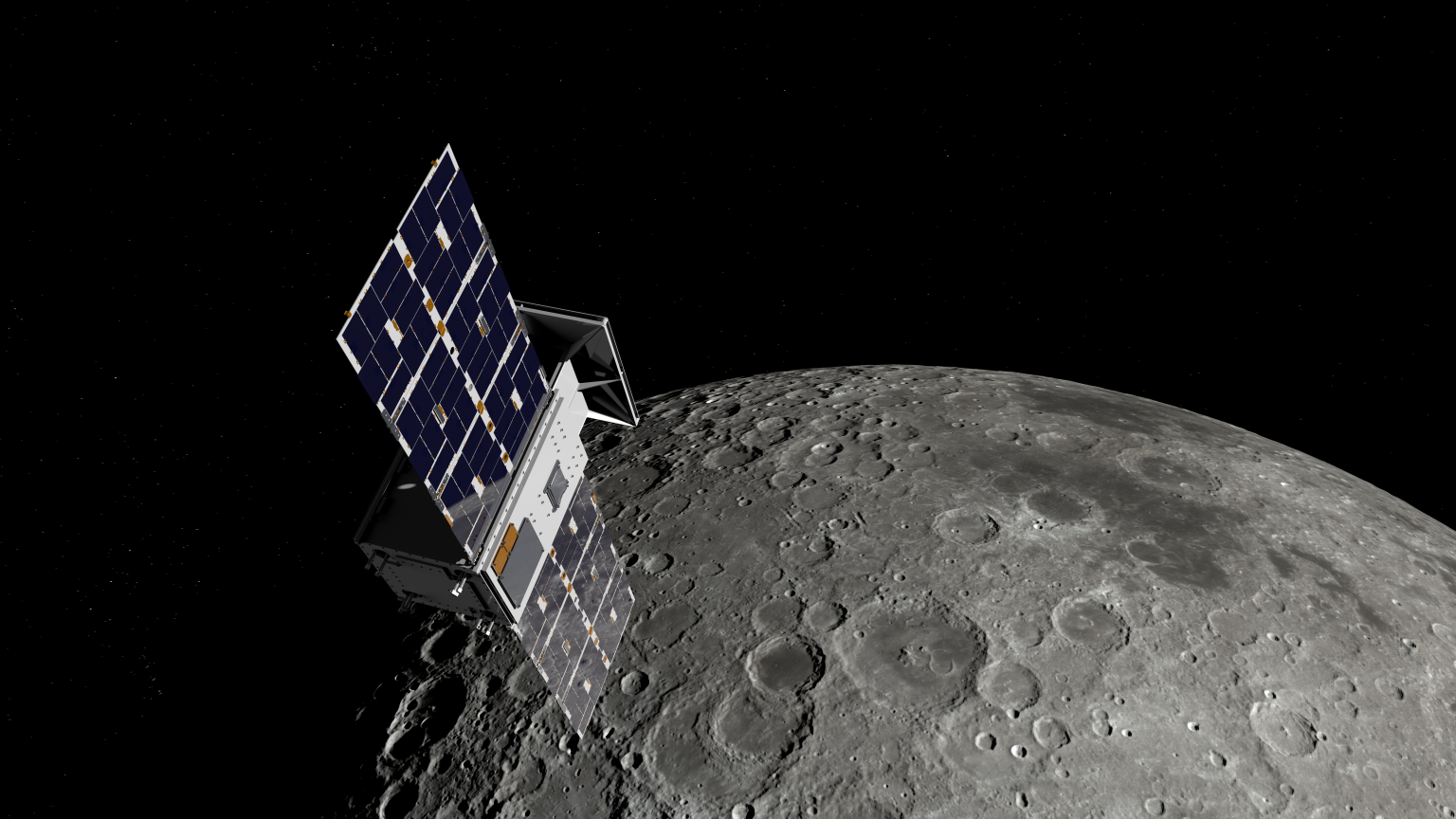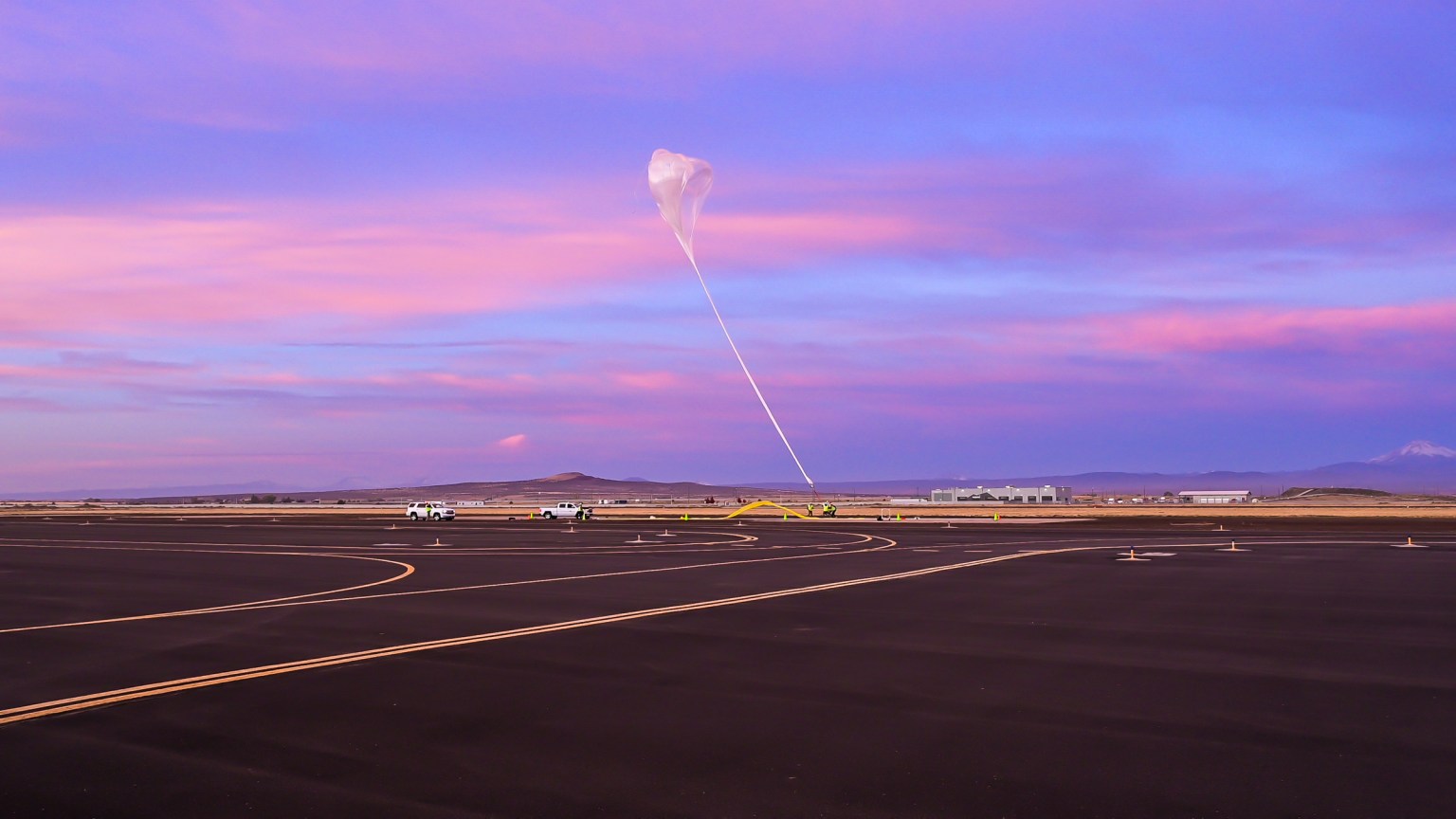January 2025 – Present
(Click here for the NASA Launches Archive)
| Launch Campaign | Launch Provider | Mission Name | Launch Date | Deployment Status | Rocket | Mission Description | Payload(s) | Organization(s) |
|---|---|---|---|---|---|---|---|---|
| Resupply | ELaNa 56 | TRACERS (Tandem Reconnection and Cusp Electrodynamics Reconnaissance Satellites) | 7/23/25 | 7/23/25 | Falcon 9 | This mission will investigate magnetic reconnection and its effects in Earth’s atmosphere. | Analyzer for Cusp Electrons, Analyzer for Cusp Ions, 2-axis Electric Field, fluxgate MAGnetometer, Magnetic Search Coil | Iowa State University, Southwest Research Institute, NASA’s Goddard Space Flight Center, University of California, Los Angeles and University of California, Berkeley |
| REAL (Relativistic Electron Atmospheric Loss) | 7/23/25 | 7/23/25 | Falcon 9 | Launched as a rideshare payload, this 3U CubeSat project will study the loss of high-energy electrons from Earth’s Van Allen belts into the atmosphere which could improve better models to protect satellites and ground systems from damaging space weather. | High-time-resolution particle detectors | Dartmouth College and Montana State University | ||
| Resupply | ELaNa 54 | TES-22 (TechEdSat-22 // Technology Education Satellite‑22) | 1/14/25 | 1/14/25 | Falcon 9 | This 1U CubeSat was designed to test novel technologies and gather data on a region of Earth’s upper atmosphere. It is a prototype for a small constellation of CubeSats to measure the thermosphere during a solar coronal event. | Exo-Brake, a radiation detector, and a solid-state battery evaluation experiment. Other payloads are a low-cost electrical power system, a flexible operating system for nanosats called TES-OS, and an orbital art installation | NASA Ames Research Center |
January 2024 – December 2024
| Launch Campaign | Launch Provider | Mission Name | Launch Date | Deployment Status | Rocket | Mission Description | Payload(s) | Organization(s) |
|---|---|---|---|---|---|---|---|---|
| Resupply | ELaNa 52 | DORA (Deployable Optical Receiver Aperture) | 8/4/24 | 10/9/24 | Falcon 9 | DORA aimed to demonstrate high-speed connectivity for the cis-lunar communication network using a widefield laser communications suitable for 1000km links. | Optical receiver | Arizona State University, Jet Propulsion Laboratory |
| CySAT-1 (Cyclone Satellite 1) | 8/4/24 | 10/9/24 | Falcon 9 | Academic technology demonstration mission of a 3U to measure Earth’s soil moisture using a software defined radiometer in LEO.This mission serves as a pathfinder for the team to understand the radiometer for asteroid surveying payload applications for a future asteroid surveying mission. | Software defined radiometer | Iowa State University | ||
| Resupply | ELaNa 48 | CURIE (CubeSat Radio Interferometry Experiment) | 7/9/24 | 7/9/24 | Ariane 6 | This mission will use two 3U CubeSats to advance NASA’s understanding of the unresolved origins of radio waves coming from the Sun using a technique called low frequency radio interferometry, which has never been used in space before — representing a pathfinder for radio astronomy in general. The two spacecraft were launched together as a 6U and then separated into the two 3U CubeSats. | Radio interferometer | University of California, Berkeley |
| Resupply | ELaNa 43 | CatSat | 7/3/24 | 7/3/24 | Alpha | A 6U CubeSat will demonstrate and characterize the performance of a new inflatable antenna technology, record high frequency (HF) radio signals to probe the charges in the ionosphere, and take images of the Earth. | Inflatable Antenna Deployment System (IADS), high frequency (HF) radio antenna, two low resolution metrology cameras and one high resolution HD camera. | University of Arizona |
| KUbeSat-1 (Kansas University Satellite 1) | 7/3/24 | 7/4/24 | Alpha | This mission will use a 3U CubeSat to further understand exposure in Earth’s ionosphere and its effect on crewed missions with a cosmic ray detector. | Primary Cosmic Ray Detector & High-Altitude Calibration (HiCalK) payload | University of Kansas | ||
| MESAT-1 (Maine Satellite 1) | 7/3/24 | 7/4/24 | Alpha | A 3U academic mission with three student-designed payloads to study albedo, coastal water quality, and harmful algal blooms. | ALBEDO, IMAGER, DAB | University of Maine | ||
| R5-S2-2.0 (Realizing Rapid, Reduced-cost high-Risk Research) | 7/3/24 | 7/4/24 | Alpha | The R5 project is a series of CubeSats that are intended to rapidly and affordably get technology prototypes into LEO. Each evolution of the spacecraft bus will be suitable for a variety of payloads; the R5 S2 and S4 are 6U platforms that aims to assess the suitability of COTS components for free-flying extravehicular inspection capabilities including cameras, computers, and algorithms. | Spacecraft is considered a “payload bus” designed as a technology demonstration platform | NASA’s Johnson Space Center | ||
| R4-S4 (Realizing Rapid, Reduced-cost high-Risk Research) | 7/3/24 | 7/4/24 | Alpha | |||||
| Serenity III | 7/3/24 | 7/4/24 | Alpha | This project serves as a low-cost opportunity for academic experiments, allowing educational interaction with a CubeSat in LEO. | Camera, radiation dosimeters, and a GPS module | Teacher’s in Space, Villanova University College of Engineering | ||
| SOC-I (Satellite for Optimal Control and Imaging) | 7/3/24 | 7/4/24 | Alpha | A 2U CubeSat that will fly the first in-space demonstration of real-time optimization-based constrained attitude control. | Convex optimization-based attitude guidance algorithm called SOC-i’s Optimal Attitude Reorientation (SOAR) | University of Washington | ||
| TES-11 (TechEdSat-11 // Technology Education Satellite-11) | 7/3/24 | 7/4/24 | Alpha | TES-11 is a 6U spacecraft that will test an updated Exo-Brake for faster de-orbiting, a neuromorphic processor for onboard AI, and a LEO-to-GEO communication system for improved Earth observation data. | Exo-Brake, BrainStack-3, LEO-to-GEO Communication System | NASA Ames Research Center | ||
| Resupply | ELaNa 51 | ACS3 (Advanced Composite Solar Sail) | 4/23/24 | 4/23/24 | Electron | The primary objective of the 12U CubeSat ACS3 mission is to demonstrate the successful deployment of the composite boom solar sail in low-Earth orbit. | Composite solar sail | NASA Langley Research Center, AST&Defense LLC of College Park, Maryland, NASA Ames Research Center, Santa Clara University |
| BurstCube | 3/21/24 | 4/18/24 | Falcon 9 | A 6U CubeSat mission, BurstCube will continuously monitor for gamma-ray burst events providing greater coverage for rare and unusual transients. This data will give astronomers more information on other gamma-ray sources, and allow for rapid alerts and initial detection of high-energy events. | Gamma-Ray burst detector | NASA Goddard Space Flight Center, University of Alabama, University of Maryland, University of the Virgin Islands, Universities Space Research Association, Naval Research Laboratory, and NASA Marshall Space Flight Center | ||
| HyTI (Hyperspectral Thermal Imager) | 3/21/24 | 4/18/24 | Falcon 9 | This mission aims to enable the next generation of high spatial, spectral and temporal resolution thermal infrared (TIR) imagery monitoring Global Hydrological Cycles and Water Resources, and developing a detailed understanding of the movement, distribution and availability of water and its variability over time and space from LEO from a 6U CubeSat. | Hyperspectral imager | Saraniasat, Inc., Jet Propulsion Laboratory, United States Geological Survey, University of Hawaii at Manoa, University of Hawaii Maui College | ||
| SNoOpI (Signals of Opportunity P-band Investigation) | 3/21/24 | 4/18/24 | Falcon 9 | This 6U CubeSat mission aims to demonstrate and validate the in-space use of P-band signals of opportunity to measure root zone soil moisture and snow water equivalent. If successful, this will verify important assumptions about reflected signal coherence, robustness to the RFI environment, and the ability to capture and process the transmitted signal in space. | P-band reflectometer | Purdue University, NASA Goddard Space Flight Center, Jet Propulsion Laboratory | ||
| Big Red Sat-1 | 3/21/24 | 4/18/24 | Falcon 9 | A technology demonstration 1U CubeSat mission, BRS1 will test and demonstrate perovskite solar panel technology from the National Renewable Energy Laboratory. A primary goal of this project is to engage the development of critical technologies to improve solar power generation. | Perovskite solar panels | University of Nebraska | ||
| SpaceX Transporter‑10 Rideshare mission | ELaNa 57 | M3 (Multi-Mode Mission) | 3/4/24 | Falcon 9 | This is a microthruster technology demonstration mission on a 3U CubeSat platform that aims to validate the operation and performance of a multi-mode-capable thruster with a student-developed power processing unit and feed system. | Multi-mode propulsion system | Missouri University of Science and Technology |
January 2023 – December 2023
| Launch Campaign | Launch Provider | Mission Name | Launch Date | Deployment Status | Rocket | Mission Description | Payload(s) | Organization(s) |
|---|---|---|---|---|---|---|---|---|
| Starling | 7/17/23 | 7/17/23 | Electron | Primarily a technology demonstration mission, this 6U CubeSat swarm mission will demonstrate technologies for autonomous swarm navigation. | Mobile Ad-hoc Network (MANET), Starling Formation-Flying Optical Experiment, Distributed Spacecraft Autonomy (DSA), Reconfiguration and Orbit Maintenance Experiments Onboard (ROMEO) system | Blue Canyon Technologies, LLC, NASA Ames Research Center, Stanford University | ||
| SpaceX Transporter‑7 | ELaNa 40 and 47 | CIRBE (Colorado Inner Radiation Belt Experiment) | 4/15/23 | 4/15/23 | Falcon 9 | This 3U mission aims to characterize the formation of the inner radiation belt electrons as well as determine where these particles come from and how they behave. | A solid-state charged particle instrument named Relativistic Electron Proton Telescope integrated little experiment – 2 (REPTile-2) | University of Colorado Boulder |
| LLITED (Low-Latitude Ionosphere/Thermosphere Enhancements in Density) | 4/15/23 | 4/15/23 | Falcon 9 | A mission using two 1.5U CubeSats will investigate the equatorial temperature and wind anomaly (ETWA) that occurs in the neutral atmosphere, and the equatorial ionization anomaly (EIA) that occurs in the region containing charged particles by providing coincident measurements of the duskside thermosphere/ionosphere at lower altitudes. | Miniature ionisation gauge space instrument (MIGSI), a planar ion probe (PIP), and a GPS radio occultation sensor (CTECS-A) | The Aerospace Corporation, Embry-Riddle Aeronautical University, Daytona Beach, Florida, and University of New Hampshire, Durham, New Hampshire |
January 2022 – December 2022
| Launch Campaign | Launch Provider | Mission Name | Launch Date | Deployment Status | Rocket | Mission Description | Payload(s) | Organization(s) |
|---|---|---|---|---|---|---|---|---|
| CRS-26 | ELaNa 49 | MARIO (Measurement of Actuator Response and Impedance on Orbit) | 11/26/22 | Falcon 9 | This 3U technology demonstration will characterize the performance of piezoelectric actuators in low-Earth orbit conditions to ultimately study the behavior and degradation of macro-fiber composite materials under actuation and structural health monitoring configurations. | Piezoelectric actuators | University of Michigan, Ann Arbor | |
| CRS-26 | petitSat (Plasma Enhancements in The Ionosphere-Thermosphere Satellite) | 11/26/22 | Falcon 9 | A 6U CubeSat mission aims to study density irregularities in the mid and low-latitude ionosphere as a precursor to a possible Explorer-class mission. | Ion-Neutral Mass Spectrometer and Gridded Retarding Ion Drift Sensor | NASA Goddard Space Flight Center, Utah State University and Virginia Tech | ||
| CRS-26 | SPORT (Scintillation Prediction Observations Research Task) | 11/26/22 | Falcon 9 | This is a 6U mission that will explore space weather in the ionosphere to understand what drives the formation of dense plasma bubbles that bloom over the equator and tropics at night. | Ion Velocity Meter (cu-IVM), GPS Radio Occultation (Compact Total Electron Content Sensor), Electric Field Probe (EFP), Langmuir Probe, Swept Impedance Probe (SIP), Magnetic Field Probe (Fluxgate) | NASA Marshall Space Flight Center, The Brazilian Space Agency, University of Texas at Dallas, The Aerospace Corporation, Utah State University | ||
| CRS-26 | TJREVERB (Thomas Jefferson High School for Science and Technology Research and Education Vehicle for Evaluating Radio Broadcasts) | 11/26/22 | Falcon 9 | A fully educational mission, this 2U CubeSat aims to study the use of iridium as a primary radio communication method and demonstrate using a passive magnet onboard and the Earth’s magnetic field for stabilization rather than using an attitude determination and control system for pointing accuracy and stabilization for iridium. | Full duplex ultra high frequency (UHF) downlink and very high frequency (VHF) uplink transceive | Thomas Jefferson High School for Science and Technology | ||
| Artemis I | SLS | BioSentinel | 11/16/22 | Deployed | Space Launch System (SLS) | Primary objective of this 6U mission is to use a biosensor using a simple model organism (yeast) to detect, measure, and correlate the impact of space radiation to living organisms over long durations in heliocentric orbit. | BioSensor | NASA Ames Research Center |
| Artemis I | Near Earth Asteroid Scout | 11/16/22 | Deployed | Space Launch System (SLS) | This reconnaissance 6U CubeSat mission wil rendezvous an asteroid using a solar sail propulsion; mapping the asteroid by observing its position in space, the asteroid’s shape, rotational properties, spectral class, local dust and debris field, regional morphology and regolith properties. | High resolution science-grade monochromatic camera | Jet Propulsion Laboratory and NASA Marshall Space Flight Center | |
| CRS-25 | ELaNa 45 | JAGSAT-1 | 7/14/22 | Falcon 9 | A 2U cubesat scientific investigation mission, JAGSAT-1 will measure plasma electron density at submeter level resolution to resolved measurements of plasma density irregularities in the ionosphere. | Time Domain Impedance Probe (TDIP) | University of South Alabama, Mobile | |
| CRS-25 | JAGSAT D3 (Drag De-Orbit Device) 1 | 7/14/22 | Falcon 9 | This technology demonstration mission will test a device that can guide small satellites from low Earth orbit, maneuvering them through Earth’s atmosphere, where they burn up. | Drag device | Embry-Riddle Aeronautical University | ||
| CRS-25 | CLICK A (CubeSat Laser Infrared CrosslinK A) | 7/14/22 | Falcon 9 | CLICK A is a risk reduction mission that will test out elements of the optical (laser) communications and demonstrate the fine steering mirror control system’s high precision pointing performance. This will enable the use of a lower power laser in CLICK B/C, the second mission slated for launch mid-2023. | Miniaturized optical transmitter | Massachusetts Institute of Technology, University of Florida, NASA ARC | ||
| CRS-25 | CapSat-1 | 7/14/22 | Falcon 9 | This 1U mission intends to advance the current industrial standard for a CubeSat’s EPS by validating a novel capacitor developed by Maxwell Technologies. | Capacitor | The Weiss School | ||
| CRS-25 | Beavercube | 7/14/22 | Falcon 9 | 3U CubeSat will strive obtain medium-resolution images of global forest canopies with spectral resolution of 10 nm across the visible and near-infra-red | Two FLIR Boson Long-Wave Infrared (LWIR) cameras and one MatrixVision BlueFox Visible Spectrum (VIS) camera. | Massachusetts Institute of Technology (MIT) | ||
| ASTRA – Rocket 3.3 | Commerical Provider | TROPICS-1 (Time-Resolved Observations of Precipitation Structure and Storm Intensity with a Constellation of SmallSats) | 6/12/22 | Launch failure | Astra Rocket-3.3 | This mission initially consisted of six 3U cubesats to provide improved time-resolved observations of tropical cyclones compared to traditional observing methods. TROPICS-1 consisted of two 3U cubesats that failed to reach orbit. | High-performance radiometer | MIT Lincoln Laboratory, NASA GSFC |
| STP-S28A | Commerical Provider | NACHOS -2 (Nano-satellite Atmospheric Chemistry Hyperspectral Observation System) | 7/2/22 | Deployed | LauncherOne | The NACHO mission will allow scientists to detect, map, and quantify Earth’s dilute trace gases more easily, which is critical for learning more about everything from volcanology to climate change. The NACHO mission is comprised of two 3U cubesat demonstrations (NACHOS-1 and NACHOS-2) to help researchers determine whether constellations of CubeSat-like small satellites could gather and process high-resolution imaging data as efficiently as larger, single-platform satellites. | Offner-type hyperspectral imager | Los Alamos National Lab |
| STP-S28A | ELaNa 39 | GPX2 | 7/2/22 | 7/2/22 | LauncherOne | This is a 3U technology demonstration mission to evaluate the performance of commercial off-the-shelf (COTS) GPS receivers, IRIDIUM Short-Burst Data command/telemetry communication architecture, and the use of a composite additive-manufactured Windform XT 2.0 chassis for the 3U form factor CubeSat. | Differential global positioning systems (dGPS) | NASA’s Langley Research Center, The Aerospace Corporation |
| STP-S28A | CTIM-FD (Compact Thermal Irradiance Monitor-Flight Demonstration) | 7/2/22 | 7/2/22 | LauncherOne | This 6U CubeSat mission will spend one year in orbit to see if smallsats can be as effective at measuring total solar irradiance (TSI) as larger sensors like the total irradiance monitor (TIM) instrument used aboard the SORCE and TSIS-1 missions. | Compact Total Irradiance Monitor with Vertically Aligned Carbon Nanotube (VACNT) bolometers | University of Colorado Boulder / LASP, | |
| Rocket Labs – Electron Rocket | Commerical Provider | CAPSTONE (Cislunar Autonomous Positioning System Technology Operations and Navigation Experiment) | 6/28/22 | Deployed | Electron | A demonstration mission, this 12U CubeSat will verify the dynamics of the near rectiliniear halo orbit around the Moon for at least six months. | Flight computer and radio, Cislunar Autonomous Positioning System (CAPS™) | NASA, Advanced Space, Terran Orbital Corporation and Stellar Exploration |
| SpaceX Transporter-5 | Commerical Provider | PTD-3 (Pathfinder Technology Demonstrator 3) TBIRD | 5/25/22 | Deployed | Falcon 9 | This 6U CubeSat carries the TeraByte InfraRed Delivery (TBIRD) system that will demonstrate high-data-rate capabilities of laser communications from a CubeSat in low-Earth orbit | TeraByte InfraRed Delivery (TBIRD) system | NASA’s Goddard Space Flight Center, Ames Research Center, JPL, MIT |
| SpaceX Transporter-5 | Commerical Provider | CPOD (CubeSat Proximity Operations Demonstration) | 5/25/22 | Deployed | Falcon 9 | CPOD mission consists of two 3U CubeSats that will demonstrate precision circumnavigation and docking ultimately validating and characterizing many new miniature low-power proximity operations technologies applicable to future missions. | Docking device, imaging sensors | NASA’s Ames Research Center |
| NG-17 Resupply | ELaNa 44 | NACHOS-1 (Nano-satellite Atmospheric Chemistry Hyperspectral Observation System) | 2/19/22 | 6/30/22 | NG-17 Antares | The NACHO mission will allow scientists to detect, map, and quantify Earth’s dilute trace gases more easily, which is critical for learning more about everything from volcanology to climate change. The NACHO mission is comprised of two 3U cubesat demonstrations (NACHOS-1 and NACHOS-2) to help researchers determine whether constellations of CubeSat-like small satellites could gather and process high-resolution imaging data as efficiently as larger, single-platform satellites. | Offner-type hyperspectral imager | Los Alamos National Lab |
| VCLS Demo-2A | ELaNa 41 | BAMA-1 | 2/10/22 | Launch failure | Astra Rocket-3.3 | A technology demonstration mission, BAMA-1 was going to conduct a flight demonstration of a drag sail module by rapidly deorbiting the satellite. | University of Alabama, Tuscaloosa | |
| VCLS Demo-2A | INCA (Ionospheric Neutron Content Analyzer | 2/10/22 | Launch failure | Astra Rocket-3.3 | This mission aimed to study the latitude and time dependencies of the neutron spectrum in low-Earth orbit for the first time to improve current space weather models and mitigate threats to space and airborne assets. The importance of this mission is to enable a better understanding of the neutron spectrum in low earth orbit, as the data received is currently limited to that from high altitude balloons. | Silicon Photomultiplier (SiPM) based neutron detector | New Mexico State University, Las Cruces, University of New Hampshire, and NASA’s Goddard Space Flight Center | |
| VCLS Demo-2A | QubeSat | 2/10/22 | Launch failure | Astra Rocket-3.3 | The primary goal of this project was to use a 2U “Quantum” cubesat to rest and qualify a quantum gyroscope developed by researchers at UC Berkeley in low Earth orbit conditions. | Quantum Gyroscope | University of California, Berkeley, Space Science Laboratory | |
| VCLS Demo-2A | R5-S1 | 2/10/22 | Launch failure | Astra Rocket-3.3 | This mission intended to demonstrate a fast and cost-effective way to build successful CubeSats in addition to demonstrating some technologies that are important to in-space inspection, which could help to make crewed space exploration safer and more efficient. | NASA’s Johnson Space Center | ||
| STP-27VPB | ELaNa 29 | PAN (Pathfinder for Autonomous Navigation) | 1/13/22 | LauncherOne | This project is a technology demonstration to launch two 3U CubeSats that will autonomously rendezvous and dock in low-Earth orbit. If successful, the technology demonstrated by PAN will reduce the mass and complexity associated with traditional rendezvous and docking systems. | An autonomous control algorithms for rendezvous and docking maneuvers; low-power reconfigurable magnetic docking technology; and compact, lightweight and inexpensive precision relative navigation using carrier-phase differential (CD) GPS. | Cornell University, NASA’s Langley Research Center |































